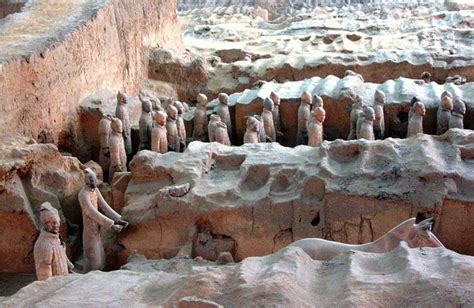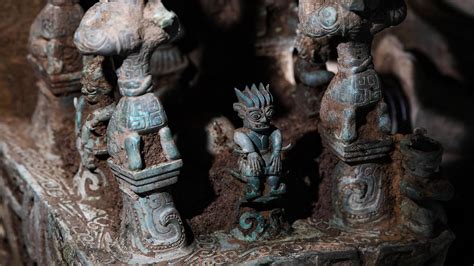chinese excavations Learn about the Sanxingdui culture, a mysterious Bronze Age civilization that flourished in southwest China and vanished around 1100 B.C.E. Discover the latest findings of .
China 25.6v200ah Excavator Battery Diesel Replacement Lithium Battery, Find details about China Excavator Battery from 25.6v200ah Excavator Battery Diesel Replacement Lithium .
0 · why are china's tomb so invasive
1 · sanxingdui china archaeology
2 · chinese artifacts found today
3 · china's tomb
4 · china tomb found
5 · china tomb archaeology
6 · china emperor tomb
7 · ancient artifacts found in china
You can also reach us by the following. Email: [email protected]. WhatsApp: .
Archaeologists excavated 200 more clay figures of soldiers, horses and weapons in the mausoleum of Emperor Qin Shi Huang, who ruled China from 221 to 210 B.C. The terracotta .Learn about the Sanxingdui culture, a mysterious Bronze Age civilization that flourished in s. A bronze altar and a dragon with a pig's nose are among a trove of items discovered in sacrificial pits that shed new light on the buried secrets of an ancient Chinese . Archaeological excavations revealed the field was sitting above a number of pits that were jam-packed with thousands of life-size terracotta models of soldiers and war horses, .
The terracotta figures are life-sized, typically ranging from 175 cm (5.74 ft) to about 200 cm (6.6 ft) (the officers are typically taller). They vary in height, uniform, and hairstyle in accordance with their portrayed rank. Their faces appear to be different for each individual figure, scholars have identified 10 base facial forms which were then further developed to give each figure individualit. Learn about the Sanxingdui culture, a mysterious Bronze Age civilization that flourished in southwest China and vanished around 1100 B.C.E. Discover the latest findings of .
Learn about the thousands of clay soldiers and horses buried with the first Qin emperor for over 2,000 years. Explore the archaeological site, the museum, and the . Qin tomb is the burial place of the first Qin emperor, who unified China and built the Great Wall. It contains a vast underground palace, a terra-cotta army, and other treasures, but the tomb itself remains unexcavated.
why are china's tomb so invasive

Learn about the Shang dynasty capital of Anyang, where the earliest Chinese writing and archaeology originated. Explore over two hundred artifacts from the museum's . A 3,000-year-old cemetery containing the tombs of a wealthy clan has been uncovered in central China following two years of excavation by archaeologists. Learn about the legacy of Qin Shi Huang Di, the First Emperor of China, and his massive tomb complex with thousands of lifelike clay soldiers. Explore the clues and .
Archaeologists excavated 200 more clay figures of soldiers, horses and weapons in the mausoleum of Emperor Qin Shi Huang, who ruled China from 221 to 210 B.C. The terracotta army was built to.
A bronze altar and a dragon with a pig's nose are among a trove of items discovered in sacrificial pits that shed new light on the buried secrets of an ancient Chinese civilization. Archaeological excavations revealed the field was sitting above a number of pits that were jam-packed with thousands of life-size terracotta models of soldiers and war horses, not to mention.Learn about the Terracotta Army, a collection of terracotta sculptures depicting the armies of Qin Shi Huang, the first emperor of China. Discover the history, discovery, necropolis, excavation, and legacy of this UNESCO World Heritage Site. Learn about the Sanxingdui culture, a mysterious Bronze Age civilization that flourished in southwest China and vanished around 1100 B.C.E. Discover the latest findings of 13,000 artifacts,.
Learn about the thousands of clay soldiers and horses buried with the first Qin emperor for over 2,000 years. Explore the archaeological site, the museum, and the exhibitions of this ancient. Qin tomb is the burial place of the first Qin emperor, who unified China and built the Great Wall. It contains a vast underground palace, a terra-cotta army, and other treasures, but the tomb itself remains unexcavated. Learn about the Shang dynasty capital of Anyang, where the earliest Chinese writing and archaeology originated. Explore over two hundred artifacts from the museum's collection, including bronze vessels, jade ornaments, and ritual objects.
A 3,000-year-old cemetery containing the tombs of a wealthy clan has been uncovered in central China following two years of excavation by archaeologists. Learn about the legacy of Qin Shi Huang Di, the First Emperor of China, and his massive tomb complex with thousands of lifelike clay soldiers. Explore the clues and controversies revealed by. Archaeologists excavated 200 more clay figures of soldiers, horses and weapons in the mausoleum of Emperor Qin Shi Huang, who ruled China from 221 to 210 B.C. The terracotta army was built to.
A bronze altar and a dragon with a pig's nose are among a trove of items discovered in sacrificial pits that shed new light on the buried secrets of an ancient Chinese civilization.
Archaeological excavations revealed the field was sitting above a number of pits that were jam-packed with thousands of life-size terracotta models of soldiers and war horses, not to mention.
Learn about the Terracotta Army, a collection of terracotta sculptures depicting the armies of Qin Shi Huang, the first emperor of China. Discover the history, discovery, necropolis, excavation, and legacy of this UNESCO World Heritage Site. Learn about the Sanxingdui culture, a mysterious Bronze Age civilization that flourished in southwest China and vanished around 1100 B.C.E. Discover the latest findings of 13,000 artifacts,. Learn about the thousands of clay soldiers and horses buried with the first Qin emperor for over 2,000 years. Explore the archaeological site, the museum, and the exhibitions of this ancient.
Qin tomb is the burial place of the first Qin emperor, who unified China and built the Great Wall. It contains a vast underground palace, a terra-cotta army, and other treasures, but the tomb itself remains unexcavated. Learn about the Shang dynasty capital of Anyang, where the earliest Chinese writing and archaeology originated. Explore over two hundred artifacts from the museum's collection, including bronze vessels, jade ornaments, and ritual objects.
sanxingdui china archaeology
A 3,000-year-old cemetery containing the tombs of a wealthy clan has been uncovered in central China following two years of excavation by archaeologists.

case skid steer parts perth
chinese artifacts found today
6 Ton China Wheel Excavator Factory. Brand : JING GONG. Product origin : China. Delivery time : 30days. Supply capacity : 3000sets per year. Email : [email protected] Send Inquiry Now.
chinese excavations|sanxingdui china archaeology